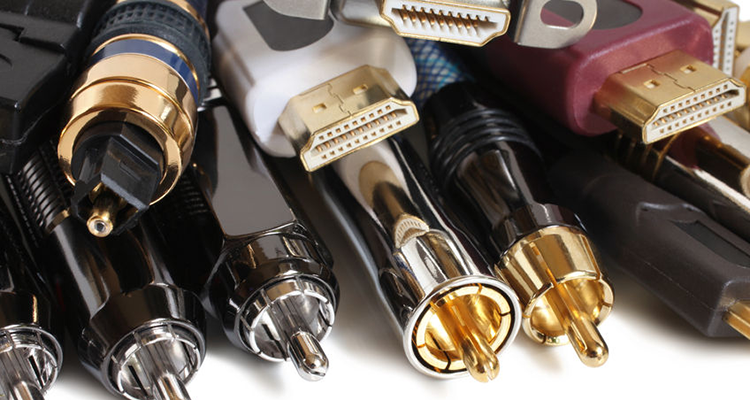Tales Of Install Nightmares: A Post-Mortem
 I’ve written a lot of columns that can categorized as either “How To Not Screw Up” or “Someone Screwed Up And Here’s How It Got Fixed.” It’s not lost on me that sometimes it sounds like I’m moralizing, and that feels awkward. Heaven knows I’ve made my share of mistakes — probably more than my share. As the saying goes, “Good judgement comes from experience, experience comes from bad judgement.”
I’ve written a lot of columns that can categorized as either “How To Not Screw Up” or “Someone Screwed Up And Here’s How It Got Fixed.” It’s not lost on me that sometimes it sounds like I’m moralizing, and that feels awkward. Heaven knows I’ve made my share of mistakes — probably more than my share. As the saying goes, “Good judgement comes from experience, experience comes from bad judgement.”
Since I’ve devoted my columns to highlighting other people’s disasters it’s only fair that I share one of mine, so I dug into my archives to jog my memory of a project that went off the rails through my own shortcomings and how I found a way to fix it.
Almost eight years ago, I designed a modest audio distribution system for the lakeside house a client was building. It was a six-zone Speakercraft MZC-66 system (wow, set the Wayback Machine!).
Because the house was due to be finished the following summer, I went out on a limb and pitched him on Speakercraft’s then-just-announced MODE iPod dock interface and MODE LCD keypad, which was to begin shipping in the spring. The plan was simple and elegant: two MODE iPod docks, one for the parents that would be available throughout the house and one for their kids that would be accessible primarily in the kid’s bedroom/rec room area, plus four standard keypads elsewhere.
Of course, there was one big flaw that was clearly visible in my design: I had specified vaporware and set a timetable for installing something that didn’t exist!
During the fall of that year the pre-wire phase went fine, as did final hardware trim-out in mid-summer when the house was finished. That was due in no small part to the fact that our installers were top-notch. None of this was their fault.
With two weeks to go until the client’s move-in date, I still didn’t have the new MODE hardware. Then Speakercraft told me that they might not be released until after Christmas. With a sick feeling of dread, I worked up the courage to call and tell the client that we would not be for move-in as promised.
Unsurprisingly, he was furious.
That was the only time in my life where I had to hold the phone a foot away from my ear.
Not that I didn’t deserve it: I overpromised, underdelivered and from the client’s perspective, pretty much ruined his family’s summer.
My salvation came from Speakercraft’s then-Canadian Sales Manager David McCoy.
After briefing him on the situation, and letting him know that my own credibility with the client was effectively zero, David called the client, took personal responsibility for the situation and restored the client’s faith in Speakercraft, the system and me. Miraculously, the MODE hardware arrived only two weeks later, and I don’t doubt that David’s saber-rattling at his colleagues was invaluable in getting the project back on track.
But the problems didn’t end there.
The next problem arose after the MODE hardware was installed and the programming uploaded. We had written the control programming for the two MODE keypads and four standard MKP-series keypads, but hadn’t tested the software in the office before the installers saddled up and drove out into the country.
That was an error.
And like the previous error, it was All. My. Fault.
Once installed, one MODE keypad was working fine, the other was not working at all and the four other keypads were acting erratically. If I had taken the time to test the system in the office, we would have known that. Instead, I had to drive two hours out to the lake with a laptop and troubleshoot the system from start to finish. The fact that the lake house had DSL was a miracle, or I would have had to pack up the MZC-66, uninstall the keypads and take everything back to the shop. Of course, it would have been better if I hadn’t had to rewrite the programing on site at all.
I ended up spending an entire day on site, on the phone constantly with Speakercraft tech support. The fix came from Speakercraft revising and updating their programming software, which I was able to download to my laptop on site. In a single day, thanks to my shenanigans, they went from Version 3.0.1 to 3.0.3.
Just so we’re clear, I ended up rewriting the client’s entire control file on site from scratch — a scenario I recommend nobody ever experience.
By the end of the day, the system was working as I had planned it. The lessons I learned were painful, but thankfully did not cause any lasting damage. In fact, the sight of me furiously working to make things right did a good job of restoring the client’s faith in me and our company. I was indebted to David McCoy who stepped up when I needed him and we remain great friends to this day.





